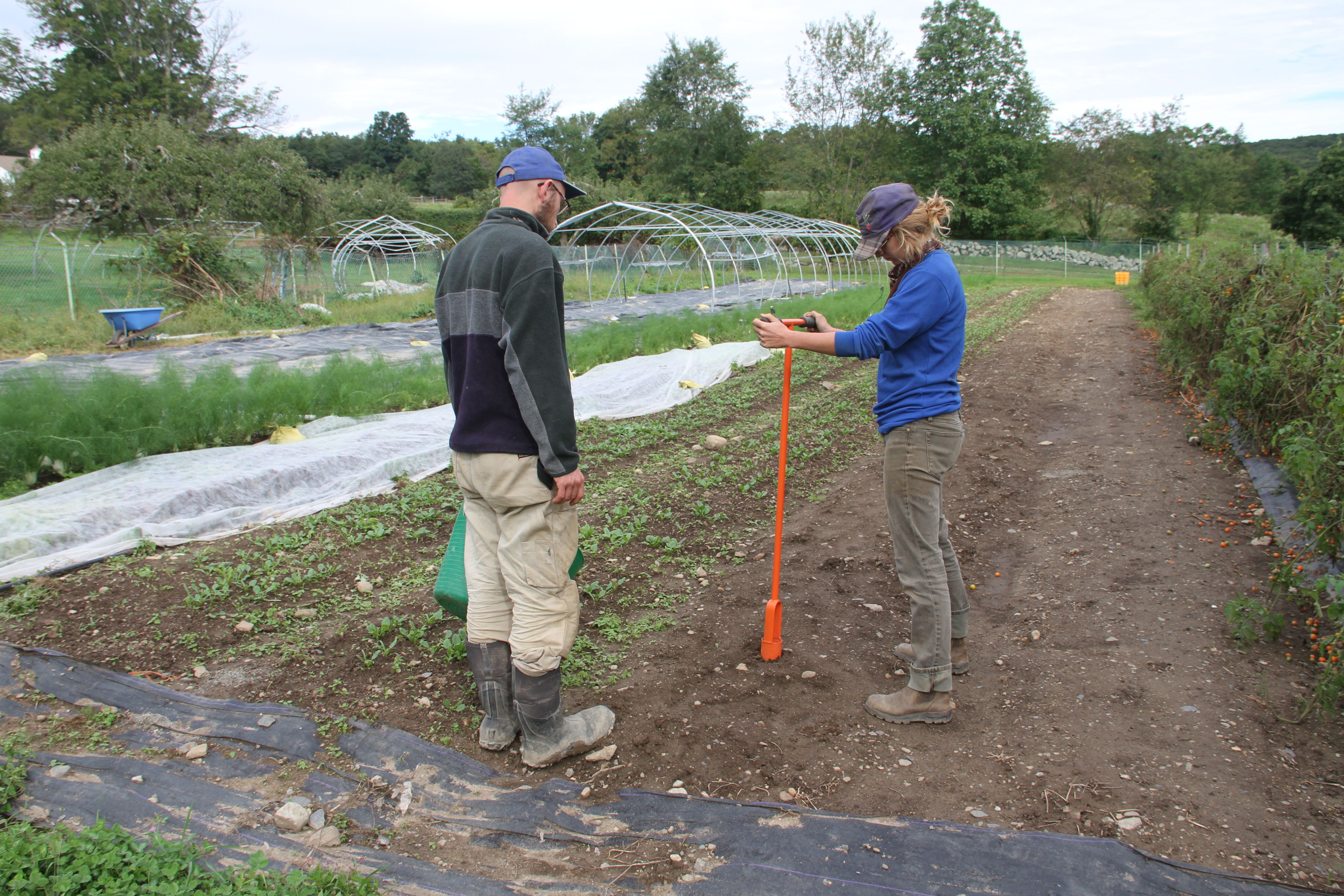Transmissions from the Rhizosphere
By Dave Lewellyn, Director of Farm Stewardship, Glynwood
I often tell program participants that until recently, when farmers talked about soil science, they were really talking about soil chemistry. But the reality down in the soil is more complex and interconnected than a mere soil chemistry test can inform. Soil functions are impacted by a combination of chemical, biological and physical factors. A healthy soil should store ample nutrients and water. It also needs to drain well. The soil aggregates, or crumbs, should hold up well in the event of heavy rain. The soil structure should provide habitat for beneficial microbes in the rhizosphere (root zone), as the microbes are essential for making nutrients available to the plants.
All of these soil functions are critical as we adjust to the realities of climate change. We need resilience in our soils because we will need those soils to support plant growth when it is hot or cold, and when there are jarring temperature swings. We need resilient soils to have stored adequate water for when conditions are dry and to have good water infiltration for when it just won’t stop raining. I could go on, because climate resilient farming is a broad topic, but for now I will touch on just one tenet: We need to manage for soil health in order to succeed in our changing climate.
The USDA Natural Resources Conservation Services (NRCS) defines soil health as “the continued capacity of soil to function as a vital living ecosystem that sustains plants, animals, and humans”.
In order to help us understand the soil health and management considerations at Glynwood, we send samples annually to the Cornell Soil Health Lab for its Comprehensive Assessment of Soil Health. The assessment is actually a battery of tests that measure the forces that determine soil function. The assessment provides information on a list of soil health indicators and a corresponding list of management recommendations for mitigating soil health constraints. Cornell’s Soil Health website has many manuals, videos and other resources that I encourage curious readers to peruse.
Glynwood provides instruction in soil science and soil health to its apprentices annually. Apprentices attend a ‘soil science primer’, which builds upon previous lessons in soils. Apprentices at Glynwood learn about the complex interrelationship of chemical, biological and physical factors at play in agricultural soils, which dictate crop and grassland performance. Key concepts in soil science such as soil pH, organic matter, macro and micro nutrients, the role of bacteria and fungi, and surface and subsurface soil compaction are reinforced. The agenda includes discussion of soil health concepts and constraints, as well as pasture remediation strategies for compacted, wet soils. Apprentices learn how to take aggregate soil samples to send to soil laboratories - something that they will need to do regularly on their own farms one day.

Sam uses a soil penetrometer to measure soil compaction, a measurement that helps us understand challenges to good soil structure, aeration, root growth and water infiltration.
For Glynwood’s own farm stewardship, we send soil samples to Cornell for the Comprehensive Assessment of Soil Health as well as to Agro One and Logan Labs for comprehensive soil chemistry analyses. This gives us plenty of data to compare to soil test data we have accumulated over years. But because soil health is about more than just chemistry, we also complete (and teach) a few DIY methods for assessing soil health (as pictured).
We are in the early stages of realizing the impact of climate change on agriculture. We need to farm for climate resiliency. A clear first step we can take is to manage for soil health. I take some comfort in knowing that for every soil health constraint, there is a management practice that can be adapted to mitigate it -- and that we are doing our part to insure that our trainees are informed about these practices.



